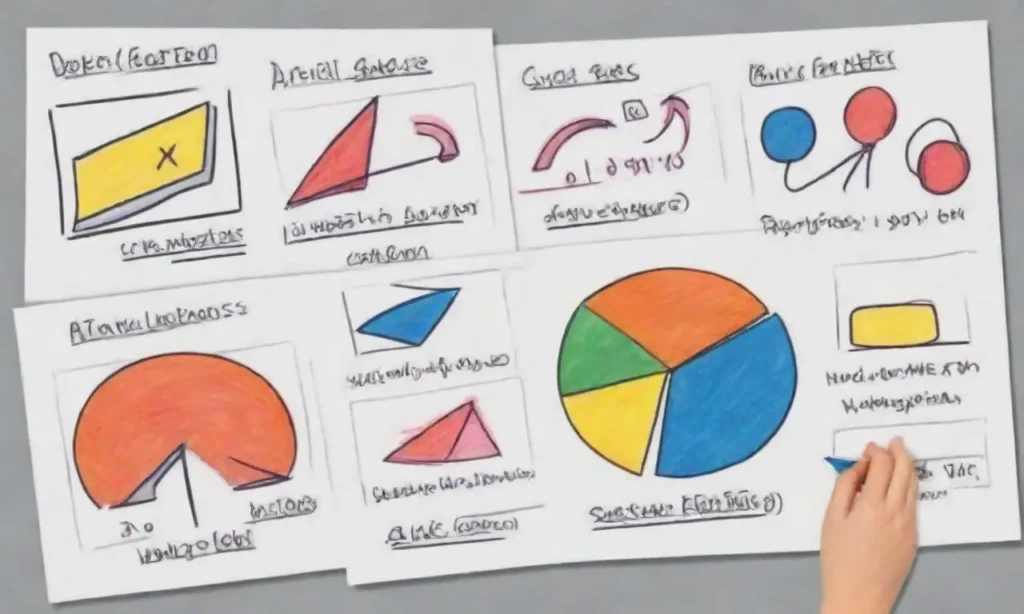
Understanding Naive Bayes for Text Classification Applications

Content
Introduction
In the realm of machine learning and natural language processing (NLP), text classification plays a crucial role in various applications such as spam detection, sentiment analysis, and recommendation systems. Among the various algorithms available for this task, one of the most straightforward and effective methods is Naive Bayes. This algorithm utilizes Bayes' theorem and makes a key assumption of independence among predictors, which simplifies the computational complexity and eases the process of model training.
This article aims to provide a comprehensive understanding of the Naive Bayes algorithm, delving into its principles, the distinct variations of the algorithm, and how it can be effectively deployed in real-world text classification applications. Through this exploration, readers will gain insights into why Naive Bayes remains a popular choice despite the plethora of advanced models available today.
The Foundations of Naive Bayes
Naive Bayes is built on the foundation of Bayesian statistics, which focuses on the probability of a hypothesis given evidence. The core of the Naive Bayes algorithm lies in Bayes' theorem, represented mathematically as:
[ P(C|X) = frac{P(X|C) cdot P(C)}{P(X)} ]
Leveraging Transformers for Advanced Text Classification SolutionsIn this equation:
- ( P(C|X) ) is the posterior probability, or the probability of class ( C ) given the features ( X ).
- ( P(X|C) ) represents the likelihood, which is the probability of feature ( X ) occurring given the class ( C ).
- ( P(C) ) is the prior probability, the initial assessment of the class before seeing the features.
- ( P(X) ) is the evidence, or the total probability of observing the feature ( X ).
Naive Bayes models assume that the presence of a feature in a class is independent of other features. This assumption, while often unrealistic, helps to simplify calculations immensely. In essence, it allows the algorithm to compute the probability of each class based on the presence of different words (features) independently, which is mathematically efficient.
An example can illustrate its functionality: imagine classifying emails as "spam" or "not spam" based on the words they contain. Each word is treated independently, and the probabilities are computed for the set of features. This approach allows Naive Bayes to be remarkably efficient, needing less computational resources than more complex algorithms.
Variants of Naive Bayes
There are several variants of the Naive Bayes algorithm, each tailored for different types of data. The most common ones include:
The Evolution of Text Classification: From Rule-Based to AI-DrivenGaussian Naive Bayes: This variant assumes that the features follow a Gaussian distribution. It is best utilized when the input data is continuous. By utilizing the mean and standard deviation of the dataset, Gaussian Naive Bayes can compute the likelihood of data points belonging to certain classes.
Multinomial Naive Bayes: This is the most popular variant used for text classification tasks, particularly suited for discrete data, such as word counts. It calculates the likelihood of the features based on the counts of occurrences in the dataset, making it ideal for text data where words' frequency is significant.
Bernoulli Naive Bayes: This model is akin to the Multinomial version but operates under the assumption that each feature is binary. It is most effective when dealing with binary occurrence data (whether a word exists or not in a text), making it useful for text classification in scenarios where the presence or absence of specific words is important.
Each of these variants has its strengths and suitable applications. The choice between them mostly hinges on the nature of the dataset and the specific requirements of the classification task at hand.
Advantages of Naive Bayes
Naive Bayes offers several advantages that contribute to its popularity in text classification applications:
Simplicity: One of the key benefits of Naive Bayes is its straightforwardness. With intuitive concepts and simple calculations, it allows users to quickly understand the core mechanics behind the model.
Efficiency: Naive Bayes operates with a low computational cost due to its lightweight processing requirements. This is particularly advantageous when working with large datasets, enabling faster training times compared to other algorithms.
Good Performance with Less Data: Naive Bayes can perform remarkably well even with a relatively small amount of training data, making it suitable for applications where data collection is limited.
Robustness Against Irrelevant Features: Because of its independence assumption, Naive Bayes maintains a robust performance even when faced with irrelevant features, which can be common in text data.
Despite its efficiency and utility, Naive Bayes does have limitations. Its reliance on the independence assumption can be a drawback when features are correlated, leading to potential inaccuracies in predictions. Nevertheless, in practical applications, its benefits often outweigh the shortcomings.
Practical Applications of Naive Bayes in Text Classification
Naive Bayes has widespread applications in text classification across various domains:
Spam Detection: One of the most common use cases is spam filtering, where emails are classified as either "spam" or "not spam." By analyzing the frequency of certain keywords or phrases, the algorithm effectively identifies unwanted messages based on prior training data.
Sentiment Analysis: In the realm of social media and product reviews, companies leverage Naive Bayes to analyze customer opinions and classify sentiments as positive, negative, or neutral. This provides valuable insights into customer satisfaction and brand perception.
Document Categorization: Many online platforms, such as news organizations or academic journals, use Naive Bayes to categorize articles into various topics. By training the algorithm on labeled articles, it can predict the category of new, unlabeled documents based on the terms they contain.
Language Detection: Naive Bayes can also be employed for identifying the language of a text. By analyzing character frequencies and linguistic features across different languages, it can classify text accurately based on its language.
Implementation Steps
To implement a Naive Bayes classifier for text classification, follow these steps:
Data Collection: Gather a dataset that consists of labeled text. For instance, collect emails with labels indicating whether they are spam or not.
Text Preprocessing: Clean the data through processes like:
- Tokenization: Splitting text into words or tokens.
- Lowercasing: Converting all characters to lowercase to ensure uniformity.
- Removing Stop Words: Excluding common words that typically hold little meaning (e.g., "and," "the," etc.)
- Stemming/Lemmatization: Reducing words to their root forms to consolidate variations.
Feature Extraction: Transform the text into numerical representations. Techniques like Term Frequency-Inverse Document Frequency (TF-IDF) or Bag of Words can be utilized to convert the textual data into structured features.
Model Training: Split the data into training and testing sets. Train the Naive Bayes model using the training data, allowing it to learn patterns and classify texts based on the extracted features.
Model Evaluation: Evaluate the performance of the model using the test set. Metrics such as accuracy, precision, recall, and F1-score can help assess how well it performs.
Deployment: Once satisfied with the performance, the model can be deployed in a production environment, where it will classify incoming text data in real-time.
Conclusion

Naive Bayes remains an essential algorithm in the field of text classification, combining simplicity, efficiency, and effectiveness for various applications. Its foundation on Bayes' theorem and the independence of features are pivotal in providing quick and reliable predictions in multiple scenarios, despite its apparent limitations. The distinct variants tailored for specific types of data allow flexibility in application, empowering practitioners to choose the right model based on their specific needs.
In today's data-driven world, where text classification is integral to decision-making processes, Naive Bayes continues to shine as a go-to solution for developers and data scientists alike. By implementing best practices and continuously monitoring model performance, organizations can leverage Naive Bayes for a diverse array of applications, enhancing their ability to analyze and understand textual data efficiently. Thus, with its long-standing reputation and valuable characteristics, Naive Bayes holds a significant place in the evolution of text classification methodologies.
If you want to read more articles similar to Understanding Naive Bayes for Text Classification Applications, you can visit the Text Classification category.



You Must Read